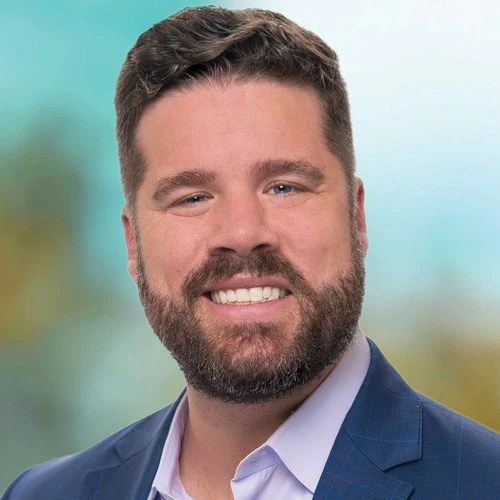11 priorities facing healthcare revenue cycle leaders in 2025
We asked revenue cycle executives from leading health systems what their top priorities will be in the new year. This is what they told us.
Jan 15, 2025
Jan 15, 2025

In the mockumentary Spinal Tap, fictional guitarist Nigel Tufnel needs an amplifier that goes up to 11 rather than the standard 10 because he needs more capacity to capture the volume of his playing. Similar to Tufnel, healthcare revenue cycle leaders needed a list of 11 not 10 to capture the capacity of their priorities heading into the new year.
No one said managing the healthcare revenue cycle was going to be easy.
But ideas, strategies, and tactics to successfully pursue all those revenue cycle priorities are just a few weeks away when healthcare revenue cycle rock stars from the nation’s leading health systems gather Jan. 26-28, 2025, at Kodiak’s invitation-only Revenue Circle event in Scottsdale, Arizona.
As a prelude to the two-day event and to shape the event’s educational programming and candid open discussion forums, we asked attendees to identify and rank their most pressing revenue cycle priorities as they prepare for what promises to be a tumultuous 2025.
Here’s what they told us:
- Denials management
- Cost reduction
- Underpayments
- Patient access/bad debt
- Revenue integrity
- Cash reconciliation
- Net revenue improvement
- Automation
- Payor accountability
- E2E (end-to-end) revenue cycle assessment
- Strategic pricing
It should come as no surprise that denials management topped the list of priorities. Payors’ claims-paying behaviors have dramatically changed over the past several years to the financial detriment of hospitals, health systems, and medical practices. Claim denial rates are at record highs.
Kodiak has documented those payor behaviors through its Payor Market Intelligence monthly and quarterly revenue cycle KPI benchmarking reports. PMI and the reports are based on actual data from 2,000 hospitals and 275,000 physicians who use Kodiak Revenue Cycle Analytics to track, manage, and report their net revenue and monitor their revenue cycle performance.
Beyond healthcare organizations, payors’ claims-paying behaviors clearly have seeped into the national consciousness as demonstrated by the less-than-empathetic public reaction to last month’s killing of Brian Thompson, CEO of UnitedHealthcare, one of the nation’s largest health insurance companies.
Asked what would improve their relationships with their payors, one health system revenue cycle leader who responded to the survey said bluntly, “If they (payors) would stop denying cases erroneously that cause significant administrative time and cost to appeal only to get overturned.”
Healthcare revenue cycle leaders ranked cost reduction—an amalgam of reducing their cost to collect and their labor expenses—as their second-biggest priority as they head into 2025. As with leaders in all revenue cycle departments in every hospital, health system, and medical practice, senior management is asking these revenue cycle executives to do more with less in a tight labor market and generate better and better results. It will be quite the juggling act next year.
Here’s a sample of the specific cost-reduction and workforce challenges cited by the respondents when asked what their biggest challenge as a revenue cycle leader will be in 2025:
- Amount of time staff spends on system workarounds
- Backfilling open positions
- Competing in the war for talent
- Identifying and hiring staff with the right skill sets, competencies, and expertise
- More accountability among unionized staff
- Reluctancy of staff to speak up when they need automation or an improved process
- Simultaneously building a leadership team while being asked to reduce costs
- Turnover in patient access staff
Underpayments ranked third on our respondents’ list of revenue cycle priorities to address in 2025. As evidenced by PMI data, payors increasingly underpay providers in two ways beyond simply delaying or denying a claim for services rendered. First, they pay less than the full amount of the claim, citing caps on specific services, lack of benefits for specific services, or lack of medical necessity for specific services. Second, they pay the full amount of the initial claim but “take back” some of the payment after the fact, citing the same reasons they use for paying less than the full amount of the claim in the first place.
“If they (payors) would just pay claims timely and at the contracted rate without delay tactics,” said one respondent when asked what it would take to improve relationships with payors.
“We need a reduction in takebacks and denials, and we need adherence to policies and procedures and the resolution of systemic issues in a timely manner,” said another.
Like we said at the beginning, healthcare revenue cycle leaders are entering the new year with a longer-than-usual list of priorities to address with less capacity to address them. That’s not fiction. They can’t simply turn their amplifiers up to 11. What comes out of the Revenue Circle event ideally has the potential to shorten that list. We will share those ideas, tactics, and strategies with you following the event.
For more information on this year’s Revenue Circle event, please visit the event website or contact me at eric.boggs@kodiaksolutions.io.
Contact Us
Want the latest updates from Kodiak?
Get access to our communications, including our Healthcare Connection newsletter, to tap into industry trends, CPE webinars, and more.


